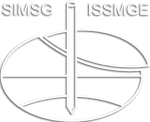Management of the dynamic performance of earthworks for high-speed rail
Management of the dynamic performance of earthworks for high-speed rail
The interaction of a high-speed train with the track system, and the response of the supporting ground can result in amplification of quasi-static track deflections as the train speed approaches a critical velocity. Numerous factors govern the development of this phenomenon, but of particular importance is the propagation of surface waves (Rayleigh waves) in the supporting ground. To avoid dynamic amplification, criteria for the design of earthwork structures are commonly specified as a minimum Rayleigh wave velocity as a function of train speed. Whilst this geo-dynamic phenomenon is recognised within the industry, there are no well-established guidelines or standards for assessing and mitigating this risk. This paper presents the approach used for contract C23 on Phase 1 of the HS2 project to assess and manage this risk, including the design of foundation treatment to improve the dynamic response of the earthwork structure.
Andrew Hope; O. Boumendjel-Game; H. Wood; Haris Saroglou; Georgios Katsigiannis; Simon Butler; James Dudfield
18th European Conference on Soil Mechanics and Geotechnical Engineering (ECSMGE2024)
D - Current and new construction methods
